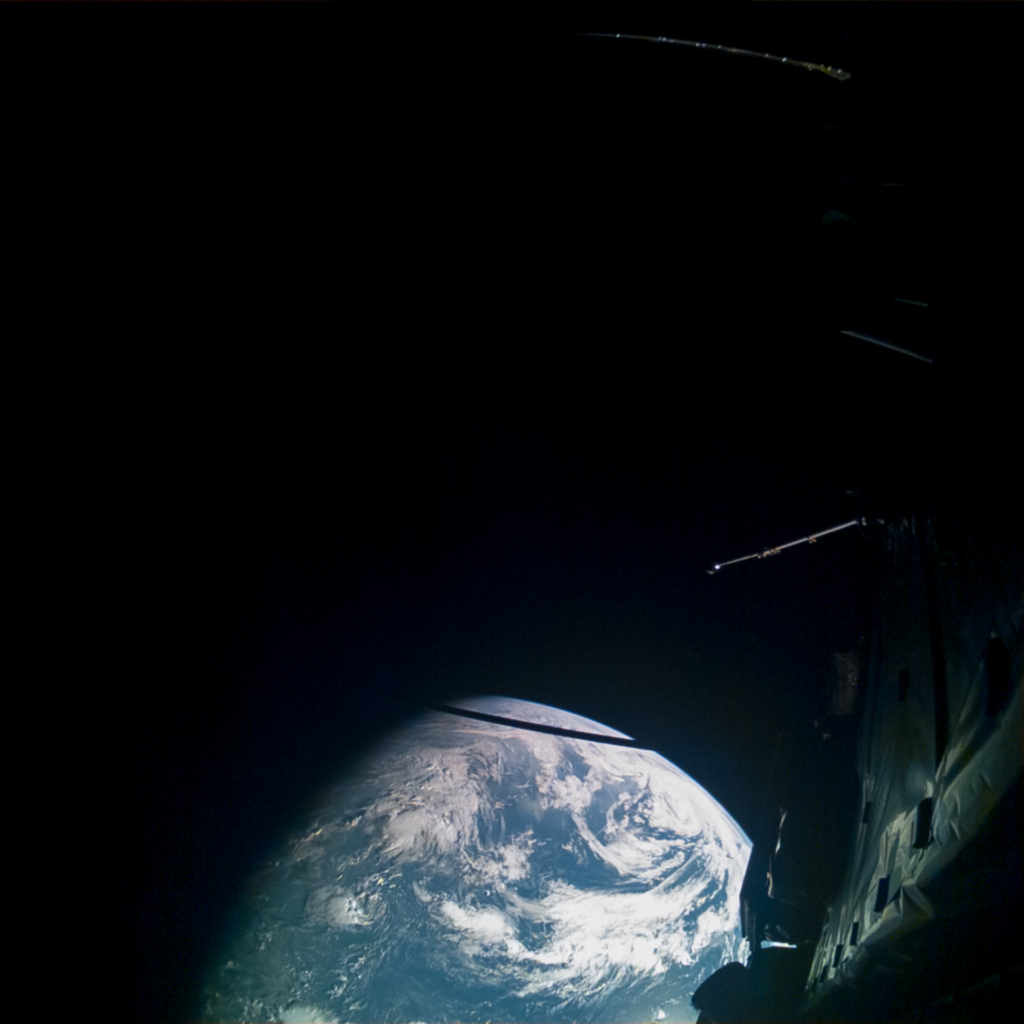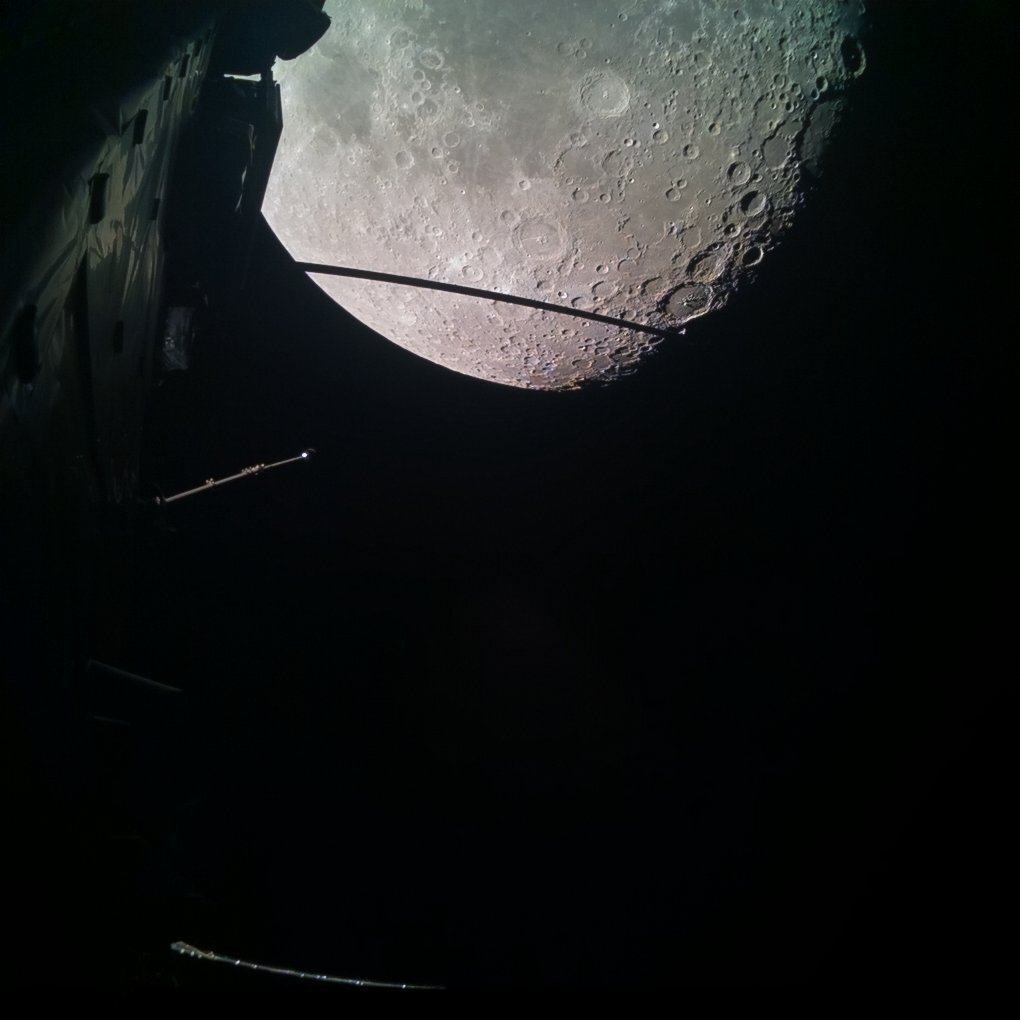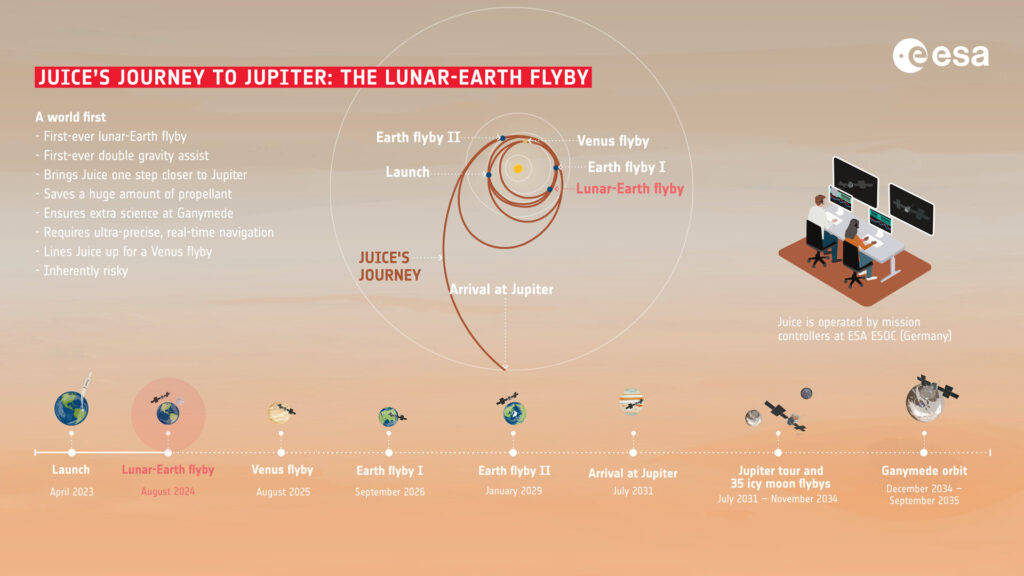The JUICE spacecraft has successfully completed the first ever double gravitational maneuver, performing a flyby of the Earth. It is now heading towards Venus.

JUICE was launched in April 2023 to study Jupiter’s moons, which hide vast oceans of liquid water beneath their icy surfaces. Since the rocket’s power wasn’t enough to send the vehicle directly to the target, engineers decided to use the gravity of other planets to accelerate it.
The first such maneuver began on August 19, 2024. It was a double maneuver. JUICE first came close to the Moon, flying only 700 kilometers from its surface. The Moon flyby increased the probe’s velocity by 0.9 km/s relative to the Sun, directing it toward Earth.

The spacecraft reached our planet after only 24 hours. On the night of August 20-21, JUICE flew at a distance of 6,840 km over Southeast Asia and the Pacific Ocean. This visit reduced JUICE’s velocity by 4.8 km/s relative to the Sun and deflected it by 100° from its original trajectory, sending the spacecraft toward Venus.
At first glance, this whole scheme seems counterintuitive. But in fact, it is the most efficient way to get to Jupiter. Thanks to the maneuver, JUICE saved about 100 to 150 kg of fuel. The probe will reach Venus in August 2025. Next, it will begin to increase its speed. JUICE will return to Earth twice in 2026 and 2029. Our planet’s gravity will give it the necessary speed to enter orbit around Jupiter. This should happen in the summer of 2031.

It’s also worth noting that mission members took advantage of the visit to the Moon and Earth to practice before the Jupiter encounter and calibrate instruments. During the flyby, JUICE collected scientific data using eight of its ten scientific instruments. The spacecraft also took a number of images of the Moon and Earth with its cameras. ESA has already published several images.
According to ESA


